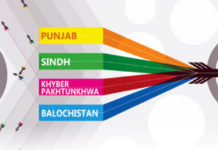ISLAMABAD: The World Bank study on Balochistan’s Renewable Energy Development has highlighted the province’s vast potential to harness variable renewable energy (VRE) sources and create a surplus of electricity.
This surplus electricity could be exported to other provinces within Pakistan or to international markets, reducing Balochistan’s reliance on power imports.
The study has suggested that the existing import connection lines can be used to stabilize the grid, allowing for the exchange of electricity with other countries at competitive prices and optimizing the annual supply mix.
In the short term (by 2028), the study has noted that while a consistent surplus of VRE supply may not be available for continuous export, there could be seasonal opportunities for reverse power flow through the soon-to-be-available CASA1000 high-voltage direct current (HVDC) transmission line to Central Asia (Uzbekistan, Kyrgyz Republic, and potentially Kazakhstan).
The Central Asia Regional Electricity Market (CAREM) in this region has experienced an electricity deficit during the winter, with growing demand. The study indicates that the GW-scale opportunity presented by Balochistan’s VRE surplus could be of interest to the countries in Central Asia to help meet their seasonal electricity demand deficit.
Balochistan has an immense, largely untapped potential for cost-effective solar and wind power generation. The province’s Photovoltaic (PV) power potential ranges from 2,000 to 2,500 kWh/m2, placing it among the world’s most resource-rich regions for solar energy. Remarkably, PV power in Balochistan can achieve up to 35% grid utilization, and its energy supply profile aligns well with the local demand profile.
Furthermore, Balochistan has able to boast excellent Direct Normal Irradiation (DNI) levels of up to 2,500 kWh/m² per year in certain areas, which presents the best opportunities for Concentrated Solar Power (CSP) development. The remote regions of Chagai and Panjgur within the province also have the most favorable wind power sites in Pakistan, with a staggering 15 GW of potential generation capacity at highly competitive costs from these clean energy sources.
The study has identified a significant short-term (by 2028) opportunity of approximately 5 GW of renewable energy capacity across 28 priority sites. This represents a “low-hanging fruit” opportunity that can be quickly unlocked by leveraging the province’s current grid infrastructure. The study’s detailed analysis of grid slots, land availability, and optimization of the most competitive VRE generation has pinpointed this substantial potential capacity for rapid development.
Implementing the identified Variable Renewable Energy (VRE) potential by 2028 would not only help Balochistan fully transition towards clean energy – as the VRE capacity would exceed the province’s demand by that year – but also create an opportunity for other provinces to access this competitively priced renewable energy.
Furthermore, the study has identified a potential for 1.7 GW of Distributed PV (DPV) systems to be installed on around 28,000 grid-connected tube wells operated by farmers. Solarizing these tube wells would not only free up additional grid capacity for further VRE deployment, but also – when combined with investments in efficient motors and pumps – dramatically reduce electricity losses in this segment.























